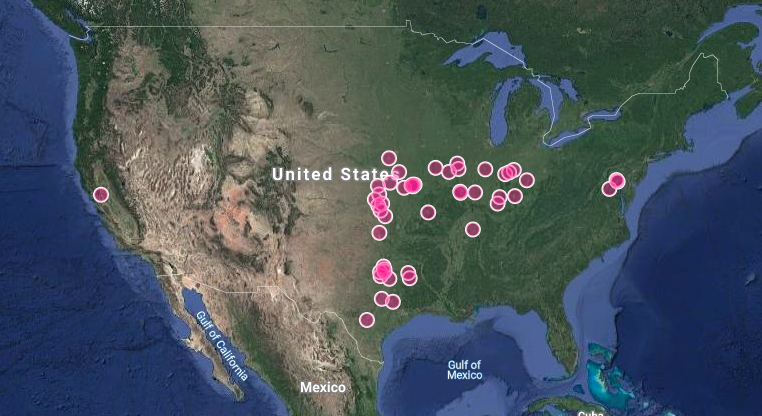(Image of Amanita thiersii from Texas, taken by iNat user @miss_mary – thank you!)
Last month, I was puzzled by a Facebook post from Marcus Matthews requesting identification input on a mushroom he found growing on a lawn in Vacaville, California.
The photo showed show three tall, drumstick-shaped, shaggy-stemmed, all-white mushrooms growing in a grassy lawn. There aren’t really many (or any?) mushrooms known from California that match this description, and these looked to me very much like Thiers’ Amanita/ The Lawn Lepidella (Amanita thiersii), which, although common in parts of the Eastern USA, is not known from anywhere in the western half of the country.
This species wasn’t even close to being on my radar as one that might eventually show up in California, so i was excited and intrigued. Marcus found these mushrooms on August 16th, and because of his prompt posting, I was able to ask him to revisit the site and make a collection the next day. Thanks to his motivation and follow-through, I soon received the dried specimens, paired with an iNaturalist observation (an easy way to keep track of the critical date, location, and image components).
So now what? Could this represent a new species for the California mycoflora? There has been some research documenting the relatively rapid expansion of this species, albeit within the eastern United States (Wolfe, Kuo & Pringle, 2012).
As Michael Kuo summarizes over at Mushroom Expert:
”Amanita thiersii was originally described from Texas (Thiers, 1957)—but the species has been expanding its range over the last few decades. In my area (central Illinois), it was rarely if ever seen 20 years ago; now it is a very common lawn ornament. It has made its first documented appearances in central Indiana over the last decade, and I have had photos of the species sent to me recently from southern Ohio and from Baltimore. The species appears to have a northern limit, perhaps associated with temperature, below the Great Lakes; it has not yet appeared in northern Illinois, even though Chicagoland is much closer to my area than Baltimore. Then again, prevailing winds here move from west to east, and if spore dispersal via wind currents is the mode of range expansion, this would provide an alternative explanation."
But even for an expanding species, this record would be extremely surprising: Outside of Marcus’ potential find, the westernmost records in the US are all well east of the 100th meridian. If this record is confirmed as A. thiersii, it would mean that this species’ range has jumped west by about 2,000 km, completely leapfrogging the Rocky Mountains, Great Basin, and Sierra Nevada. In my mind, the complete and sudden circumvention of these enormous natural barriers to dispersal, as well as the anthropophilic habitat preferences of this species points to human-mediated dispersal (rather than a potentially climate change-driven expansion, as I explored in the case of Chlorophyllum molybdites).
The approximate known distribution of A. thiersii in the USA. Marcus’ discovery (ID pending) is over there on the left, all by its lonesome.
At this point, it is certain that Marcus’ mushrooms are some kind of “Saproamanita” (the non-mycorrhizal clade of smallish, whitish Amanita that is sometimes treated as a separate genus), and doesn’t seem to be any of the usual ones found in Calfiornia (e.g. A. pruittii, A. “macerisolum”). But I’ll still need to do a little microscope work and genetic comparison to establish for certain that they’re indeed A. thiersii. Could it be, perhaps the enigmatic A. armillariiformis?
For now, the possibility that these are vanguards of a westward range expansion of A. thiersii is intriguing and somewhat plausible. Even if they aren’t A. thiersii, it would seem that they pertain to a less well-known taxon. This observation is, in my mind, a good indication that the society-level sensory networks that have emerged from citizen science are growing both in their capacity to ability to operate in near-real time, as well as in their capacity to make detections at a finer spatial grain.
I look forward to the next fascinating find that crosses the social media transom, and the one after that, and so on for the foreseeably turbulent future…

